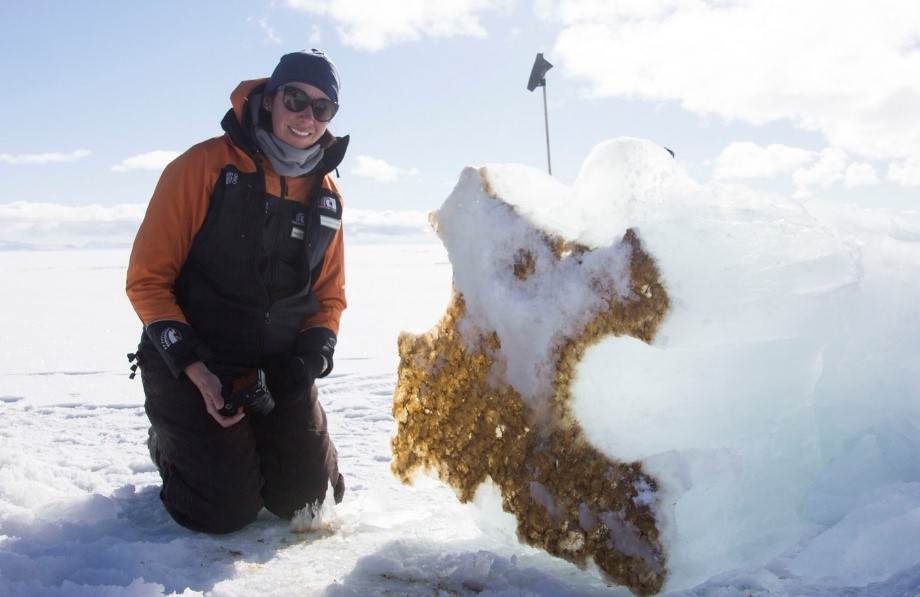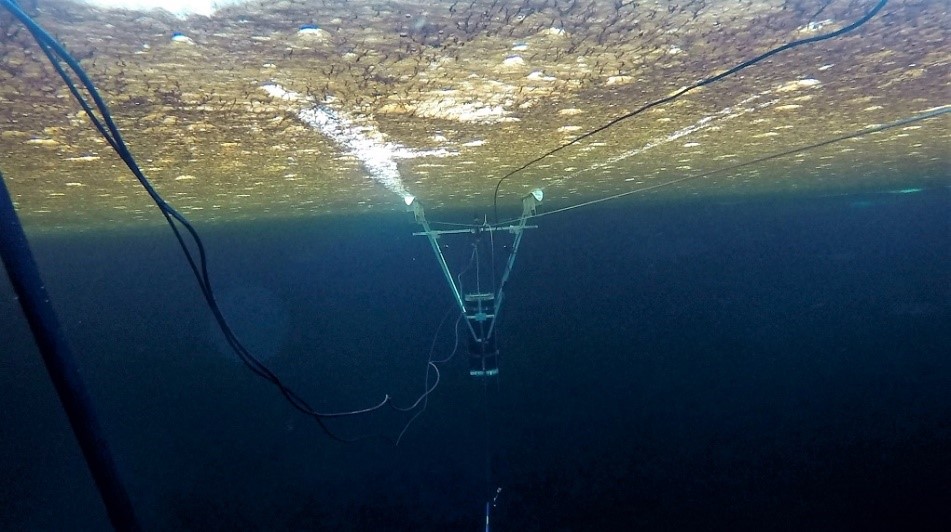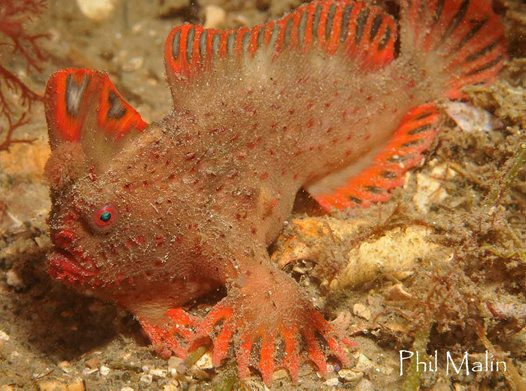Antarctic sea ice expands during the winter, only to melt back largely to the continent’s edge in summer. Monitoring changes in sea ice and its animal communities is ecologically important.

Seal ice is vital to krill which them means everything that eats krill like baleen whales. It also houses blooms of algae that animals feed upon. Sea ice protects larval krill from predators and carries them to food-rich areas. Winter sea ice is used by krill as a refuge against predation during winter, and as it breaks up serves as a drifting platform to transport larvae into more productive areas.
Because sea ice has a bright surface, 50-70 percent of incoming energy is reflected back into space. The extent of sea ice also changes ocean circulation patterns
Scientists recently spent 22 days at Cape Evans on the Ross Ice Shelf in Antarctica during November, investigating animal life on the underside of sea ice.

They were using a Hyperspectral Imaging (HI) camera to create an image that records the full spectrum of light including beyond the range visible to the human eye.
This shows the chlorophyll content, a marker for algal abundance and avoids having to collect sea ice cores, so that the equivalent of thousands of ice cores can be collected remotely, without having to “touch” the sea-ice.
Other experiments show if the algal cells are happily photosynthesising or experiencing stress.
This new remote sensing method will revolutionise our understanding of sea ice communities, which are fundamental to the base of the Antarctic food web.
